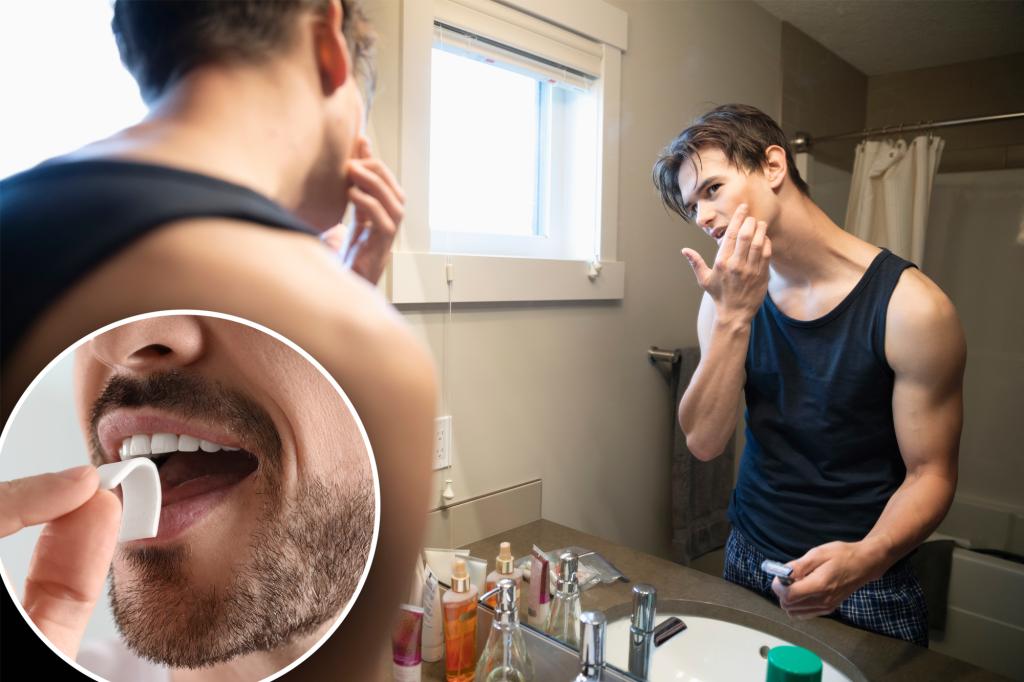The trend of “looksmaxxing” is growing, particularly among teenagers and young men who are turning to extreme measures to achieve their ideal facial features. One such method involves chewing mastic gum, which promises to build jaw muscles and create a more defined jawline. This trend has gained popularity on social media platforms such as TikTok and Reddit, where users share their experiences and results. The desire for a chiseled jawline is often driven by the promotion of looksmaxxing on social media, where individuals strive to look like models and enhance their attractiveness.
While some may believe that chewing mastic gum can help achieve a sharper jawline, celebrity dermatologist Dr. Paul Jarrod Frank warns that the results may not be as promising as advertised. He expresses skepticism about the promoted effects of the gum, stating that it may not necessarily sharpen the jawline if the bone structure is not present. Furthermore, excessive use of the gum could lead to overgrown masseter muscles and potential issues with the jaw, such as temporomandibular-jaw disorders. Despite the appealing before-and-after photos shared on social media, other factors such as lighting and angles may be contributing to the perceived results.
The proliferation of looksmaxxing and the use of mastic gum to enhance facial features have raised concerns about the mental health and well-being of individuals participating in these practices. Young teenagers, in particular, are being influenced by social media trends that promote unrealistic beauty standards and unrealistic expectations. While there may be some benefits to improving one’s appearance, it is important to consider the potential risks and side effects associated with these seemingly harmless methods. The pursuit of an ideal jawline or facial structure should not compromise one’s overall health and well-being.
Teenagers like 14-year-old Henry Dixon have expressed their interest in achieving a more defined jawline through the use of mastic gum and other facial fitness techniques. However, not all individuals may feel the same level of concern about their appearance. Dixon mentioned that while many of his peers are focused on enhancing their jawlines, he personally does not place much importance on these aspects. The pressure to conform to societal beauty standards and trends, especially on platforms like TikTok, can lead to insecurities and self-doubt among young people.
Dr. Kavita Mariwalla, a dermatologist and a mother, was taken aback when her own son expressed an interest in using mastic gum to chisel his jawline at the age of 12. She reflected on how social media influences perceptions of beauty and self-image, particularly among impressionable teenagers. The rise of looksmaxxing and the use of specialized products like mastic gum highlight the impact of social media on shaping beauty standards and driving individuals to seek perfection. Parents and healthcare professionals play a crucial role in educating young people about self-acceptance and promoting healthy attitudes towards their appearance.
In conclusion, the trend of using mastic gum to enhance jawlines and facial features reflects a broader societal obsession with beauty and perfection. While some individuals may find satisfaction in improving their appearance through facial fitness routines and product usage, it is essential to consider the potential risks and limitations of these methods. The influence of social media on shaping beauty standards and promoting trends like looksmaxxing is especially concerning for teenagers and young adults who may be vulnerable to unrealistic expectations. As seen in the case of Dr. Mariwalla’s son and other young individuals, the desire for a chiseled jawline is driven by external factors that may not necessarily reflect their true worth and value.


